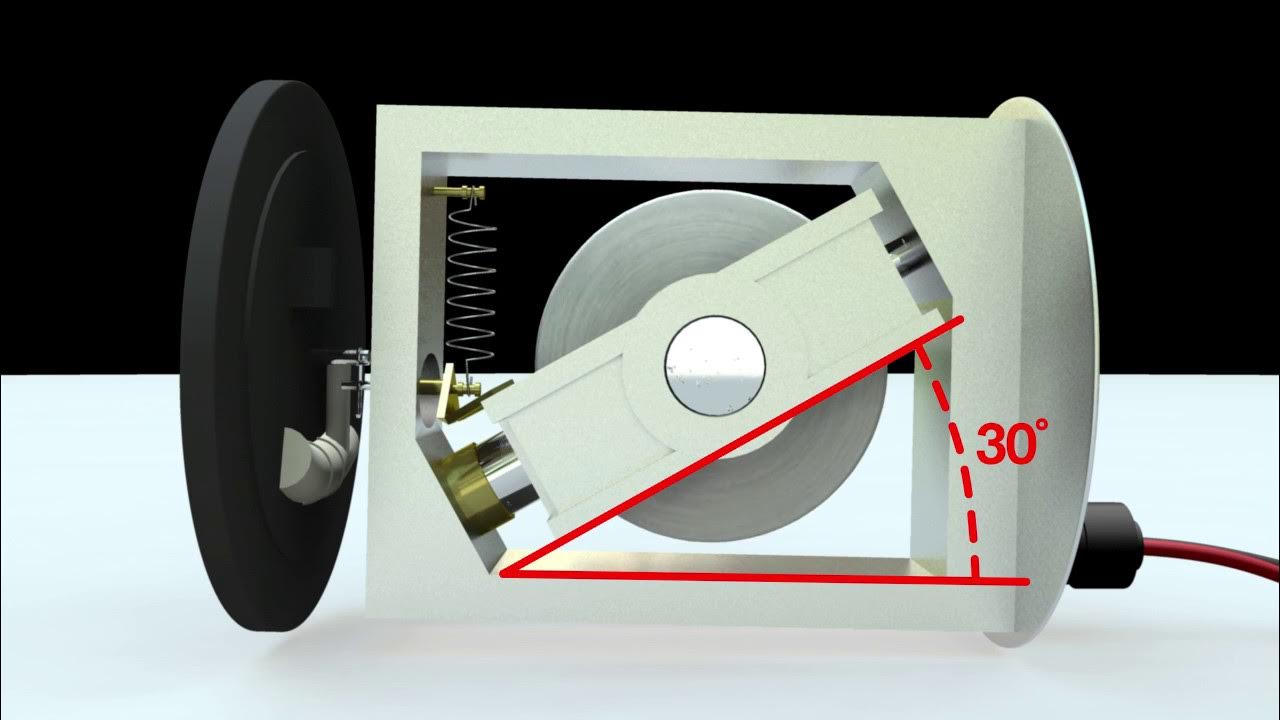The Turn Coordinator
Summary
TLDRThis video explains the operation of the turn coordinator, a key flight instrument in aircraft, based on gyroscopic principles. It distinguishes between two types: the turn and slip indicator, which shows turn direction and rate, and the turn coordinator, which adds information about banking. The video details how these instruments work, using gyroscopic precession to measure turn rates, and how the inclinometer assesses the quality of turns. It also covers internal mechanisms, showing how the instruments provide pilots with critical data to maintain coordinated flight and safely execute turns.
Takeaways
- 😀 The turn coordinator is a basic flight instrument found in most aircraft, operating on gyroscopic principles.
- 😀 It comes in two variants: the turn coordinator and the turn and slip indicator, which offer similar functions with slight differences in information presentation.
- 😀 The turn and slip indicator shows the direction of the turn and the rate of turn, but does not indicate the bank angle of the aircraft.
- 😀 The instrument includes an inclinometer at the bottom to show if the aircraft is coordinated, slipping, or skidding.
- 😀 The rate of turn scale on the turn and slip indicator shows the aircraft's heading change, with three degrees per second representing the standard rate of turn.
- 😀 The inclinometer measures the balance of centrifugal and centripetal forces during a turn, helping the pilot achieve coordinated flight.
- 😀 A coordinated turn means the ball in the inclinometer stays centered, while a skidding turn occurs when centrifugal force exceeds centripetal force.
- 😀 A slipping turn happens when centripetal force exceeds centrifugal force, causing the ball to move in the direction of the turn.
- 😀 The turn coordinator uses gyroscopic precession to measure both the rate of turn and the bank angle, though it does not directly measure the bank angle.
- 😀 In the turn coordinator, the miniature aircraft's wings indicate the rate of turn, and the gimbal is tilted 30 degrees to detect both heading and bank changes.
- 😀 Both instruments use a gyroscopic system driven by electrical current, with a red flag appearing when no power is received, indicating that the instrument should not be used.
Q & A
What is the primary function of the turn coordinator in an aircraft?
-The turn coordinator measures the aircraft's rate of turn, indicating whether the aircraft is making a turn and how fast the heading change is occurring.
How does the turn and slip indicator differ from the turn coordinator?
-The turn and slip indicator shows the rate of turn and whether the aircraft is turning left or right, while the turn coordinator also shows the banking motion of the aircraft, not just the rate of turn.
What does the inclinometer in the turn and slip indicator measure?
-The inclinometer measures the quality of the turn, showing whether the aircraft is flying coordinated, skidding, or slipping.
What does the ball in the inclinometer indicate when it is centered?
-When the ball is centered in the inclinometer, it indicates that the aircraft is making a coordinated turn.
What happens when the ball in the inclinometer moves to the right during a turn?
-If the ball moves to the right during a right turn, it indicates a slipping turn, meaning the turn is not coordinated.
How does the turn and slip indicator use gyroscopic precession to measure the rate of turn?
-The turn and slip indicator uses gyroscopic precession by incorporating a horizontal rate gyro, which tilts in response to forces applied during a turn, allowing the instrument to measure the rate of heading change.
What is the standard rate of turn, and how is it marked on the turn and slip indicator?
-The standard rate of turn is 3 degrees per second, which allows the aircraft to complete a 360-degree turn in two minutes. It is marked on the instrument as the side markings.
Why is the turn coordinator sometimes preferred over the turn and slip indicator?
-The turn coordinator is preferred because it also indicates the banking motion of the aircraft in addition to the rate of turn, giving more complete information for pilots.
What is the role of the miniature aircraft in the turn coordinator?
-The miniature aircraft in the turn coordinator indicates the rate of turn by tilting its wings, showing the direction and speed of the aircraft's turn.
How does the internal mechanism of the turn coordinator differ from the turn and slip indicator?
-The turn coordinator has a gimbal tilted 30 degrees, making it sensitive not only to heading changes but also to banking motions, while the turn and slip indicator has a gimbal without this tilt.
Outlines

This section is available to paid users only. Please upgrade to access this part.
Upgrade NowMindmap

This section is available to paid users only. Please upgrade to access this part.
Upgrade NowKeywords

This section is available to paid users only. Please upgrade to access this part.
Upgrade NowHighlights

This section is available to paid users only. Please upgrade to access this part.
Upgrade NowTranscripts

This section is available to paid users only. Please upgrade to access this part.
Upgrade Now5.0 / 5 (0 votes)





